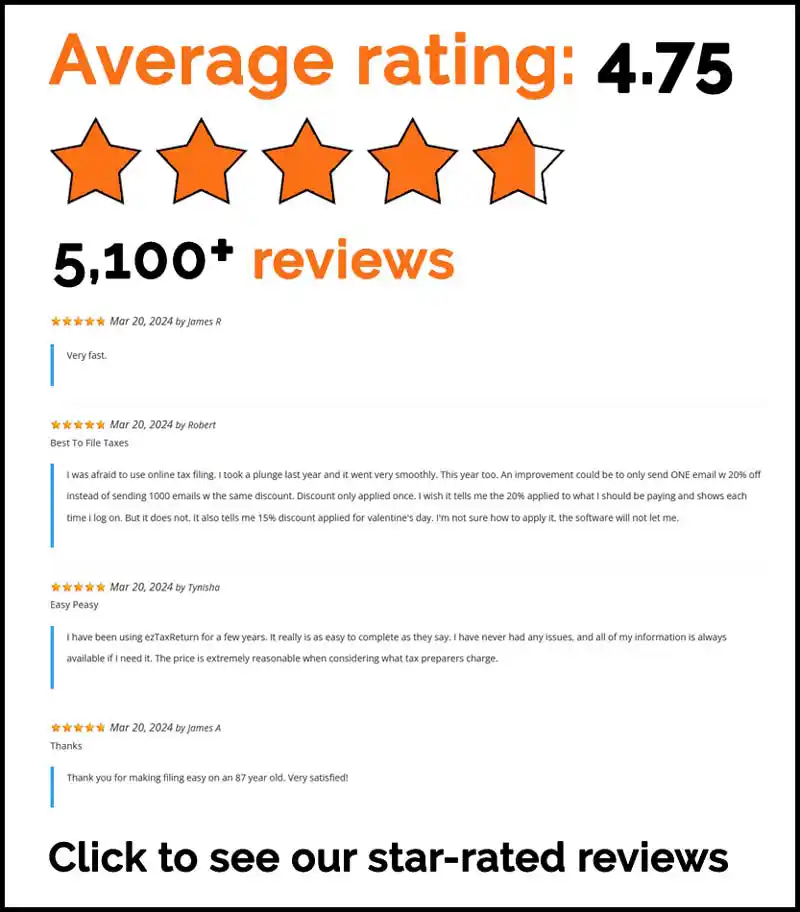The information in this article is up to date for tax year 2025 (returns filed in 2026).
Starting your first job means navigating first job taxes for the first time. This guide covers the basics: understanding paycheck deductions, filling out your W-4, and filing your first tax return. You’ll also find tips on tax credits and deductions to maximize your refund.
Key Takeaways
- Understand your tax responsibilities, including Social Security and Medicare deductions, especially if self-employed.
- Fill out your W-4 form carefully to ensure the correct withholding of federal income tax and avoid surprises at tax time.
- Make use of available tax credits and employer benefits to lower your tax liability and plan for your financial future.
Understanding Your Tax Responsibilities
Upon starting your first job, understanding the various taxes deducted from your paycheck is crucial. Employers are required to deduct Social Security and Medicare taxes from employees’ wages, as well as federal income taxes. The amount of federal income tax withheld depends on the information you provide on your W-4 form. Additionally, if your wages exceed $200,000 in a calendar year, an Additional Medicare tax of 0.9% will apply. The Social Security tax also has a wage base limit that caps the earnings subject to this tax.
Self-employed individuals should be aware that self-employment taxes are calculated at a rate of 15.3%, covering contributions to Social Security and Medicare. Since this can be a significant amount, setting aside money for these taxes throughout the year is wise.
State and local area payroll tax requirements can vary significantly, leading to unexpected liabilities if not properly managed. Awareness of these responsibilities from the start helps avoid surprises and ensures compliance with all tax obligations.
Filling Out Form W-4 Correctly
One of the first steps in your new job will be filling out Form W-4. This form informs your employer how much federal income tax to withhold from your paycheck. The amount withheld can directly impact your tax refund or the amount you owe at tax time.
Completing the W-4 form requires personal details such as your name, address, Social Security number, and tax filing status. If you qualify for exemption from withholding, write ‘Exempt’ on the form, but this is only allowed under specific conditions. The updated W-4 form eliminates allowances, and taxpayers now indicate withholding directly through other sections.
Remember to sign and date your completed W-4 before submitting it to your employer. Regularly reviewing and updating your W-4 ensures accurate federal tax withholdings. This can help you avoid owing a large amount of money at tax time or getting a smaller refund than expected.
Tracking Your Income and Expenses
Managing your finances and preparing for tax season requires tracking your income and expenses. Regular checks of financial documents can prevent last-minute tax season stress. Using manual spreadsheets, accounting software, or personal finance apps can help establish a reliable method for tracking your finances.
Categorizing income and expenses into defined groups such as freelance work, rent, and utilities helps maintain clear records. Retaining receipts and invoices is crucial for tax verification, providing necessary documentation for your expenses. This practice can save headaches when it’s time to file taxes.
Generating financial reports from tracking systems provides valuable insights into financial performance, including profit and loss statements. Historical data helps in setting budgets and forecasting future income and expenses for better financial management. Staying organized and proactive equips you to handle taxes and make informed financial decisions.
Filing Your First Tax Return
Filing your first federal income tax return may seem daunting, but it doesn’t have to be. Individuals typically use Form 1040 to report income and calculate taxes owed or refunds due. Your employer will report your earnings through Form W-2, needed for your tax return.
Tax returns are usually due by April 15 each year; if more time is needed, apply for an extension. Note that filing an extension does not extend the time to pay any taxes owed; payments must still be made by the original filing deadline.
Avoid common mistakes such as incorrect Social Security numbers, miscalculating income or deductions, and failing to report all income, including cash payments for gig work. Filing electronically and opting for direct deposit is the fastest way to receive your tax refund. Attention to these details ensures accurate tax return filing and avoids unnecessary complications. With ezTaxReturn, you can rest easy knowing your first tax filing is in good hands. Our simple, step-by-step process ensures accuracy, so you can quickly file your return and receive your refund without any hassle.
Exploring Tax Credits and Deductions
Tax credits and deductions can significantly reduce your tax liability, making them crucial for first-time job holders to understand. The Earned Income Tax Credit (EITC) is designed to assist low to moderate-income workers, offering a substantial tax benefit based on income and family size. Even if not required to file a tax return, doing so may allow you to claim refundable tax credits.
First-time job holders may qualify for the American Opportunity Tax Credit (AOTC), offering up to $2,500 per eligible student for education expenses during the first four years of higher education. This can be a significant benefit if you’re balancing work and school.
Additionally, the Saver’s Credit provides a tax credit to eligible taxpayers who contribute to retirement savings plans, such as a 401(k) or IRA. This credit can reduce the amount of tax you owe, rewarding you for saving for your future.
You may also be able to deduct student loan interest paid during the year, which can lower your taxable income and reduce your tax liability. This deduction is available even if you do not itemize deductions.
Finally, most taxpayers can claim the standard deduction, a fixed dollar amount that reduces your taxable income. For many first-time job holders, taking the standard deduction simplifies filing and helps lower the overall tax burden.
Research and claim any tax credits and deductions you qualify for. This can reduce your tax liability and potentially increase your refund, making it well worth the effort.
Benefits of Retirement Savings Plans
Participating in a retirement savings plan early in your career path offers several advantages. If your employer provides a defined contribution retirement plan, such as a 401(k) or 403(b), you can benefit from tax-deferred growth on investment earnings, which allows your savings to accumulate more over time. This means you won’t pay taxes on the money until you withdraw it, typically during retirement when you may be in a lower tax bracket.
Additionally, Individual Retirement Accounts (IRAs) present valuable options. Traditional IRAs offer tax-deductible contributions, lowering your taxable income now, while Roth IRAs provide tax-free withdrawals during retirement under certain conditions. This flexibility allows you to choose the option that best fits your current financial situation and future retirement goals.
Employer-sponsored plans often come with lower administrative costs compared to individual accounts, making them an appealing option. Taking advantage of these benefits helps set you up for a financially secure future.
Utilizing Employer Benefits
Many employers offer a range of benefits that provide significant financial advantages. Health Savings Accounts (HSAs) are available to those enrolled in high-deductible health plans and can be funded by employees or employers, with funds rolling over year to year. These accounts can lead to substantial tax savings, especially for those with high out-of-pocket healthcare costs.
An FSA, or Flexible Spending Account, is another tax-advantaged financial account offered by employers. It allows employees to set aside a portion of their earnings pre-tax to cover eligible healthcare expenses, such as medical, dental, and vision costs. By reducing taxable income, FSAs can provide significant tax savings for employees. However, funds in an FSA typically must be used within the plan year, with any unused money potentially forfeited at year’s end.
Tuition reimbursement programs are another valuable benefit. They help employees further their education while reducing taxable income for both employee and employer.
Utilizing these benefits significantly lowers your taxable income, providing financial advantages beyond your paycheck. Review what your employer offers and take full advantage of these opportunities.
Managing Multiple Jobs or Side Gigs
Having multiple jobs or side gigs can complicate managing your taxes. Consider your combined income to avoid setting your withholding too low. If you’re juggling both W-2 and 1099 income, it’s essential to understand the 1099 vs. W-2 tax implications to adjust your tax strategy accordingly.
Account for additional income or deductions in Step 4 of the W-4 form to adjust withholding amounts. For different types of side gigs, filing multiple Schedule Cs may be necessary to accurately report income and expenses from each business.
Staying organized and adjusting your withholdings appropriately helps manage your taxes effectively, even with multiple sources of income.
Preparing for Tax Season
Preparing for tax purposes season begins with gathering all necessary documents, such as W-2 forms from employers. Organizing your tax records before filing ensures accuracy and potentially uncovers missed credits or deductions.
Here’s a basic checklist for first-time tax filers:
- W-2 forms from all employers
- 1099 forms for additional income
- Social Security number(s)
- Receipts for deductible expenses
- Records of any tax credits
- Bank account information for direct deposit
When you’re ready, ezTaxReturn can guide you through filing step-by-step—even if it’s your first time.
Avoiding Common Tax Pitfalls
Starting your first tax season can be challenging, but avoiding common mistakes helps manage your finances better. Here are key areas to keep in mind:
- Update Your Tax Withholdings
Regularly review and adjust your withholding to avoid large refunds or unexpected tax bills. Use the IRS Withholding Calculator to help determine the right amount. - Don’t Overlook State Taxes
State income taxes vary depending on where you live, and they directly impact your take-home pay. Be sure to factor them into your budgeting. - Prepare for Self-Employment Taxes
If you’re self-employed or have freelance work, set aside money for taxes and consider making quarterly estimated payments to avoid penalties. - Report All Sources of Income
Track every dollar earned, including tips and side gigs. Underreporting income can lead to costly penalties later. - Be Ready for Bonus Tax Rates
Bonuses are often taxed at a higher rate than regular wages. Plan ahead so you’re not caught off guard come tax time. - File on Time
Missing the filing deadline can lead to penalties and interest. Mark your calendar and make sure to file your return on time to avoid any issues.
If you’re ever unsure about a specific situation, ezTaxReturn can help guide you through the process, ensuring you don’t miss any important steps or potential savings.
Summary
Understanding your tax responsibilities is a crucial part of starting your first job. From filling out Form W-4 correctly to exploring tax credits and deductions, being tax-savvy can save you money and prevent headaches during tax season.
We encourage you to continue learning about taxes and financial management. By taking advantage of employer benefits and retirement savings plans, you can set yourself up for a secure financial future.
Remember, being proactive and informed is the key to managing your taxes confidently. Take control of your financial situation and make the most of your hard-earned money.
Frequently Asked Questions
How do I know how much federal income tax to withhold from my paycheck?
To figure out how much federal income tax to withhold, just use the Tax Withholding Estimator on IRS.gov. It’s super helpful and tailors the amount based on your specific income and tax situation.
What documents do I need to file my first tax return?
You’ll want to grab your Form W-2 from your job and any 1099 forms for other income you have. Don’t forget to collect receipts for any deductions or credits you plan to claim too!
Can I still qualify for tax credits if I’m not required to file a tax return?
Absolutely, you can still qualify for refundable tax credits like the Earned Income Tax Credit (EITC) even if you don’t have to file a tax return. It’s worth checking out to see if you can benefit!
What should I do if I have multiple jobs or side gigs?
If you have multiple jobs or side gigs, remember to account for your total income when adjusting your tax withholding and be sure to report everything accurately on your tax return. It’s crucial to stay organized to avoid any surprises come tax time!
How can I avoid common tax pitfalls?
To dodge tax pitfalls, stay on top of your tax withholdings, set aside money if you’re self-employed, and keep a close eye on all your income sources, like tips and bonuses. It’s all about being organized and proactive!
The articles and content published on this blog are provided for informational purposes only. The information presented is not intended to be, and should not be taken as, legal, financial, or professional advice. Readers are advised to seek appropriate professional guidance and conduct their own due diligence before making any decisions based on the information provided.




